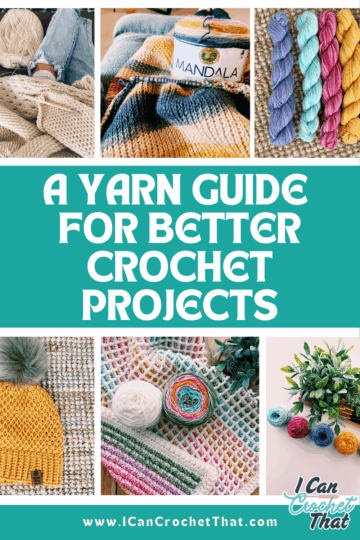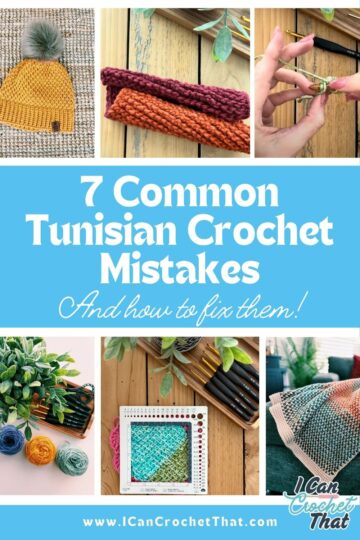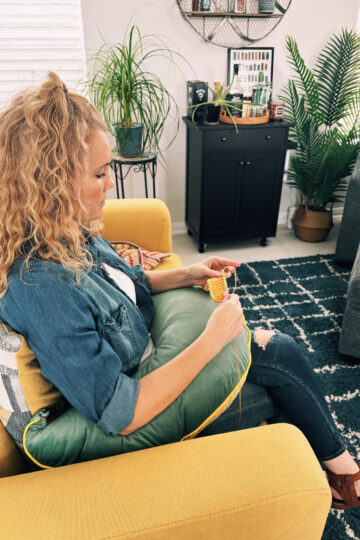Get cozy as we chat about the different types of crochet hooks! Our ultimate guide will help you pick the best crochet hook for your next yarn project.
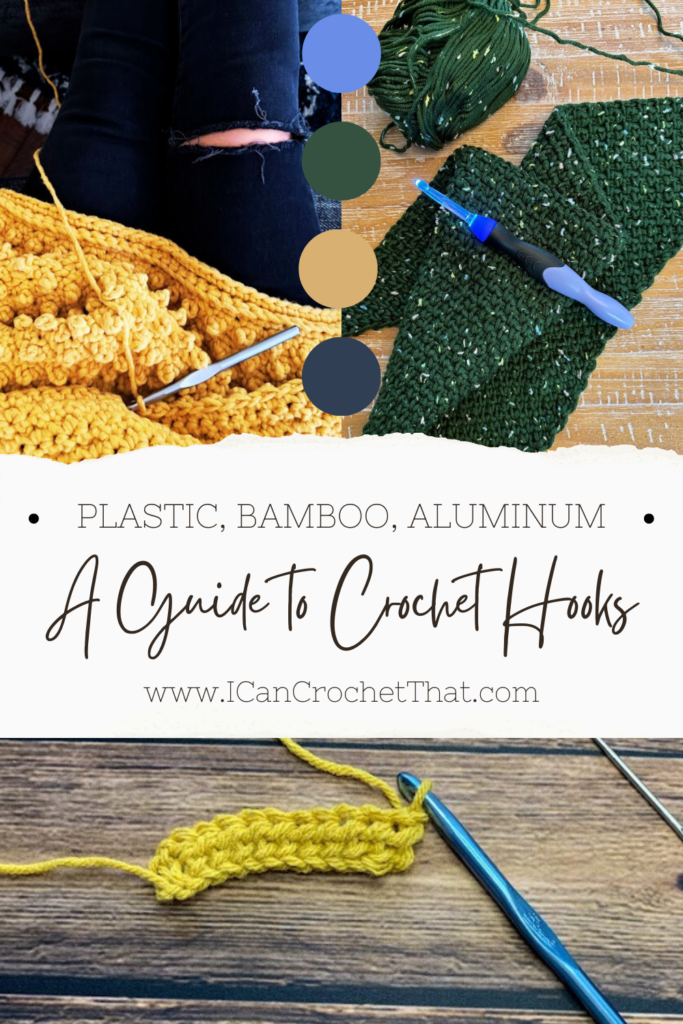
Embarking on a new crochet project is an exciting journey, and the right crochet hook can make all the difference in bringing your creative vision to life.
Just as yarn comes in various textures and colors, crochet hooks also span a diverse spectrum of materials, designs, and functionalities. The plethora of options available can be both exciting and overwhelming, especially for someone just beginning to learn how to crochet.
From the classic aluminum hooks to the warm embrace of wooden hooks, the precision of steel, or the ergonomic crochet hooks designed for comfort, each type of crochet hook has its unique purpose.
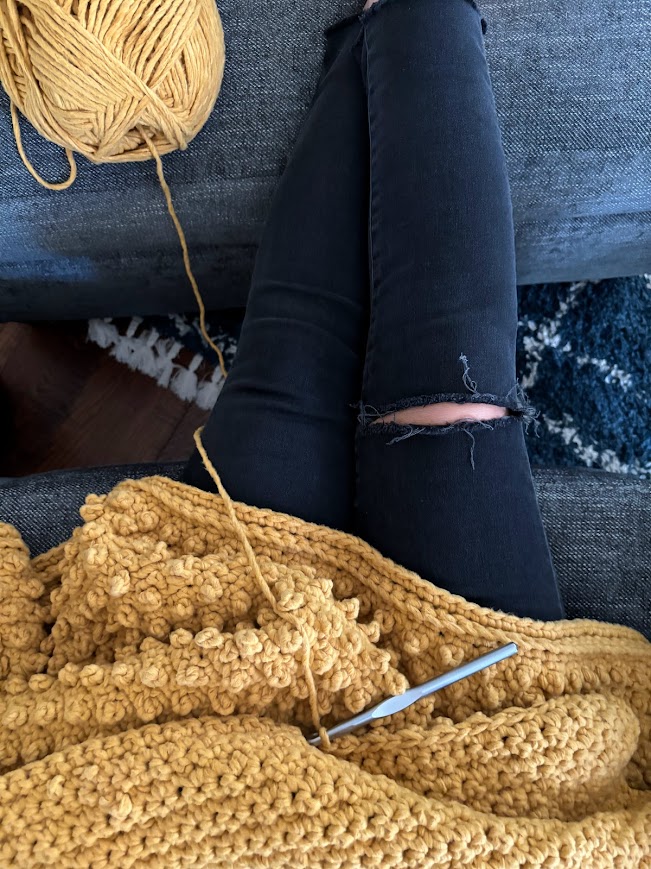
In this guide, we dive into the world of crochet hooks, exploring the characteristics that set them apart and understanding how each type contributes to the crafting experience.
We’ll look at the distinct features of steel, aluminum, plastic, and wooden hooks and discover how they influence the outcome of your crochet masterpiece.
Whether you're curious about Tunisian hooks' intricacies or plastic ones' simplicity, this guide aims to be your compass in the vast landscape of crochet tools, helping you choose the perfect hook for your next project!
Choosing Your Crochet Companion: A Guide to the Different Types of Hooks

1. Steel Crochet Hooks
Steel crochet hooks are a specific type of crochet hook that is characterized by its construction material—steel. Unlike most crochet hooks made of aluminum, plastic, or wood, steel hooks are designed for use with fine yarns and crochet threads.
Here are some key features and common uses of steel crochet hooks:
Features of Steel Crochet Hooks:
Material: Steel crochet hooks are made from steel, which makes them durable and sturdy. The steel construction allows for a thin and slender design, making them suitable for working with delicate threads.
Size Numbering: Steel hooks are typically numbered differently from regular crochet hooks. They often have lower numbers, with the smallest sizes starting around 14 or 15 and going up from there. The lower the number, the smaller the hook.
Smooth and Pointed Tip: Steel hooks have a smooth, pointed tip that is designed to be easily inserted into tight stitches and work with fine yarn or thread without snagging.
Common Uses of Steel Crochet Hooks:
Thread Crochet: Steel hooks are primarily used to work with crochet thread, a very fine yarn. This makes them well-suited for projects that require intricate details and a delicate touch.
Lace Crochet: Crocheters often use steel hooks to create lacework, doilies, and other delicate projects. The fine thread and small stitches achieved with steel hooks allow for intricate lace patterns.
Edgings and Trims: Steel crochet hooks are ideal for adding delicate edgings and trims to projects like handkerchiefs, tablecloths, and garments. The small size of the hook allows for intricate and precise detailing.
Miniature Crochet: Steel hooks are commonly employed in miniature crochet projects, where the goal is to create tiny items with fine details, such as dollhouse accessories or miniature clothing.
Jewelry Crochet: Some crocheters use steel hooks to create jewelry items like necklaces, earrings, and bracelets using crochet thread or very fine yarn.
It's important to note that steel crochet hooks are not generally suitable for regular yarn or larger projects. They excel in situations where precision and delicacy are required.
If you're working with standard yarn weights, it's advisable to use hooks made from other materials, such as aluminum or wood, that are better suited for those applications.
2. Aluminum Crochet Hooks
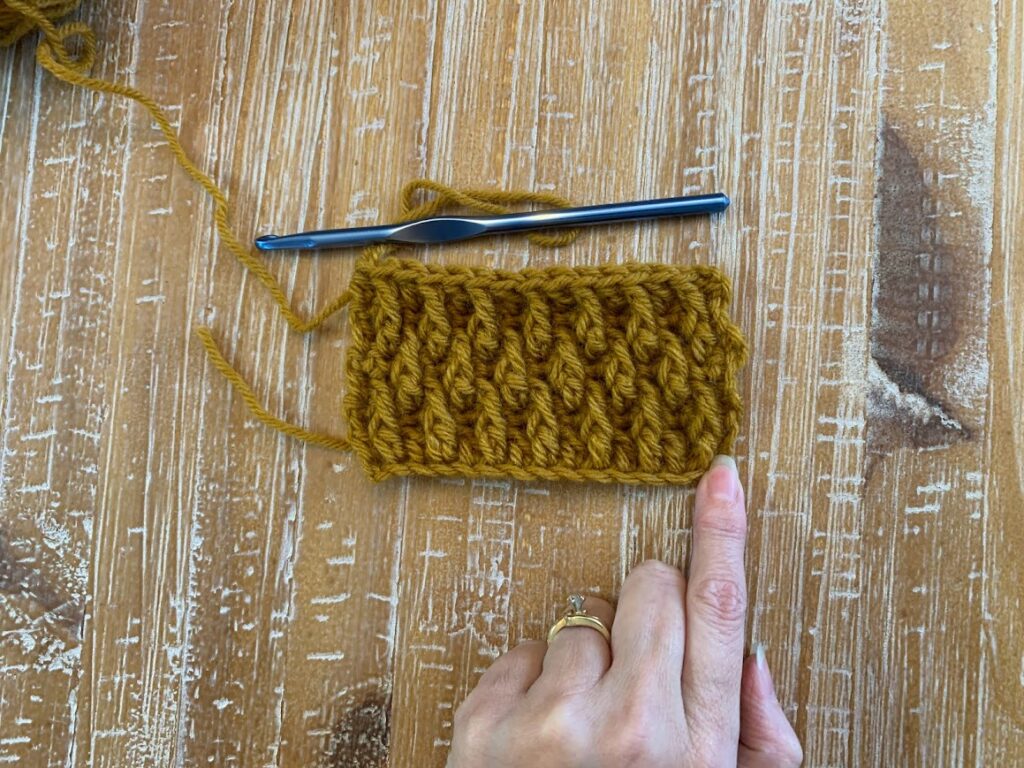
Aluminum crochet hooks are a popular and widely used type of crochet hook, known for their versatility, affordability, and durability. Here are some key features and common uses of aluminum crochet hooks:
Features of Aluminum Crochet Hooks:
Material: Aluminum crochet hooks are made from lightweight and durable aluminum. The material provides a smooth surface, allowing the yarn to glide easily, and it's also known for its strength.
Color-Coded Sizing: Aluminum crochet hooks often come in a range of sizes, and many manufacturers color-code them to make it easy for users to identify the size at a glance. Each size is assigned a specific color, simplifying the process of selecting the right hook for a project.
Smooth and Rounded Tip: Aluminum hooks typically have a smooth, rounded tip that allows for easy insertion into stitches without snagging the yarn.
Inexpensive: Aluminum crochet hooks are generally more affordable than hooks made from other materials, making them an excellent choice for beginners or those on a budget.
Comfortable Grip: Many aluminum hooks feature a comfortable grip, either in the form of a molded handle or a rubberized coating, providing a better grip and reducing hand fatigue during extended crochet sessions.
Common Uses of Aluminum Crochet Hooks:
Versatile for Yarn Weights: Aluminum hooks are suitable for a wide range of yarn weights, making them versatile for various projects. From fine threads to bulky yarns, you can find aluminum hooks in different sizes to match your preferred yarn.
Garments and Accessories: Aluminum hooks are commonly used for crocheting garments, accessories, and home decor items. Their versatility makes them suitable for a broad range of projects, including scarves, hats, blankets, and more.
Afghans and Blankets: The smooth surface of aluminum hooks allows for quick and smooth stitching, making them well-suited for larger projects like Afghans and blankets.
Amigurumi: The lightweight nature of aluminum hooks makes them suitable for creating small stuffed toys and amigurumi projects.
Learning and Practice: Due to their affordability and widespread availability, aluminum crochet hooks are often recommended for beginners as they start learning the craft. Beginners can experiment with different hook sizes and get a feel for crocheting without a significant financial investment.
Travel-Friendly: Aluminum crochet hooks are lightweight and durable, making them convenient for crocheting on the go. Their portability is especially useful for those who enjoy crafting while traveling.
Overall, aluminum crochet hooks are a versatile and practical choice for a wide range of crochet projects. They are favored by many crocheters for their affordability, ease of use, and suitability for various yarn weights.
3. Plastic Crochet Hooks
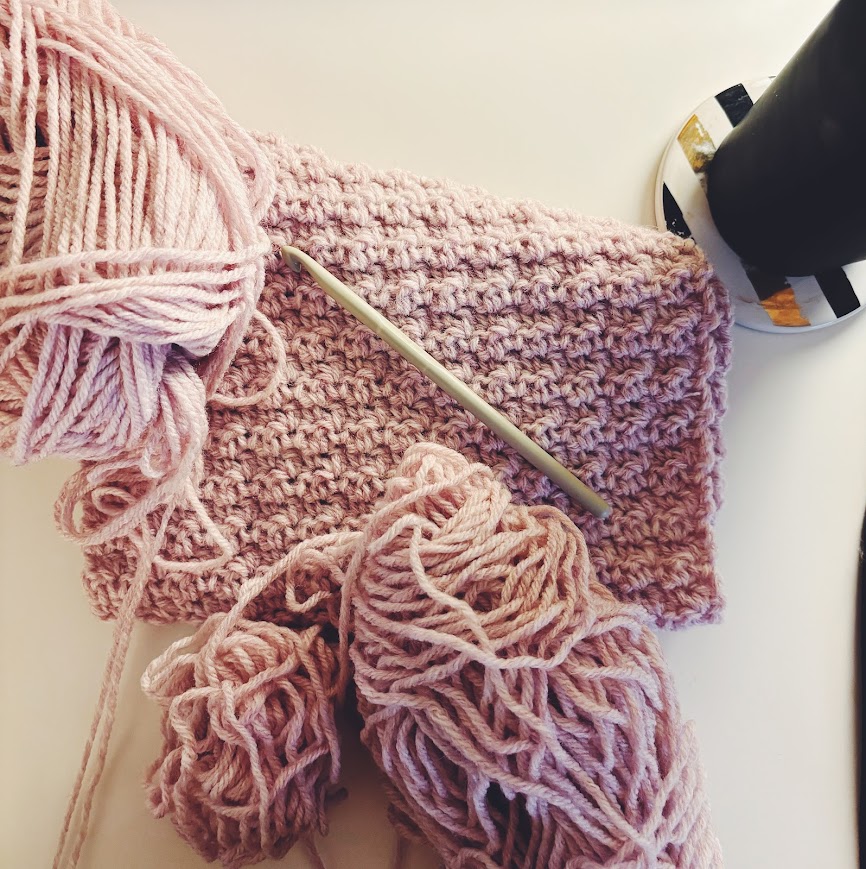
Plastic crochet hooks are another popular type of crochet hook, and they have their own set of features and uses. Here's an overview of plastic crochet hooks and how they are commonly used:
Features of Plastic Crochet Hooks:
Material: As the name suggests, plastic crochet hooks are made from various types of plastic. This makes them lightweight and often more flexible than other types of hooks.
Inexpensive: Plastic crochet hooks are generally more affordable than those made from wood or metal materials. This makes them a cost-effective choice for beginners or those on a budget.
Colorful Designs: Plastic crochet hooks often come in a variety of colors and may have fun, whimsical designs. Some are even transparent, allowing users to see the stitches more easily.
Smooth Surface: While not as smooth as metal hooks, plastic hooks have a reasonably smooth surface that allows the yarn to slide easily, reducing the risk of snagging.
Comfortable Grip: Many plastic crochet hooks feature a molded or ergonomic handle that provides a comfortable grip. This can be especially helpful for those who experience hand fatigue during long crochet sessions.
Common Uses of Plastic Crochet Hooks:
Beginner-Friendly: Plastic crochet hooks are often recommended for beginners due to their affordability and ease of use. Beginners can experiment with different hook sizes and get a feel for crocheting without a significant investment.
Children's Projects: The lightweight nature and colorful designs of plastic crochet hooks make them suitable for introducing children to crocheting. They are easy for small hands to handle and can make learning more enjoyable.
Travel-Friendly: Plastic crochet hooks are lightweight and durable, making them convenient for crocheting on the go. They are less likely to break or bend, making them a practical choice for travel projects.
Outdoor Crocheting: Plastic hooks can be a good choice if you enjoy crocheting outdoors or in different environments. They are less affected by temperature changes than metal hooks and won't become too hot or too cold.
Crafting with Sensitive Yarns: Plastic hooks are suitable for working with sensitive or delicate yarns that may be prone to snagging on rougher surfaces. The smoother plastic surface is gentler on the yarn.
While plastic crochet hooks may not be as popular as their metal or wooden counterparts among experienced crocheters, they have their own niche and are valued for their affordability, lightweight design, and suitability for certain situations. They are a great option for those just starting to explore the crochet world.
4. Wooden Crochet Hooks
Wooden crochet hooks are crafted from various types of wood and offer a unique and natural alternative to other materials like metal or plastic. Here are some features and common uses of wooden crochet hooks:
Features of Wooden Crochet Hooks:
Material: Wooden crochet hooks are made from different types of wood, such as bamboo, birch, or rosewood. Each type of wood has its own characteristics, but in general, wooden hooks have a warm and organic feel.
Smooth Surface: Wooden hooks have a smooth surface that allows the yarn to glide easily without causing snagging. The warmth of the wood can also be more comfortable for some crocheters.
Lightweight: Wooden hooks are generally lightweight, making them comfortable to use for extended periods without causing hand fatigue.
Natural Aesthetics: Wooden crochet hooks often look natural and aesthetically pleasing. Some crocheters appreciate the warmth and beauty of wooden tools.
Warmth to the Touch: Wooden hooks can feel warm to the touch, which some crocheters find more pleasant than the cool feel of metal hooks.
Common Uses of Wooden Crochet Hooks:
Delicate Yarns: Wooden hooks are well-suited for working with delicate, lightweight yarns. The smooth surface helps prevent snagging, making them ideal for projects that require precision, such as lacework and fine garments.
Comfortable Grip: Many wooden hooks have ergonomic designs and comfortable handles that cater to those who prefer a more substantial grip. This can be especially beneficial for crocheters who experience hand discomfort.
Reduced Hand Fatigue: The lightweight nature and ergonomic designs of wood hooks can help reduce hand fatigue during extended crocheting sessions.
Eco-Friendly Choice: Some crocheters prefer wooden hooks for environmental reasons, as they are often made from sustainable materials. Bamboo, in particular, is known for its rapid growth and renewability.
Quieter Crocheting: Wooden hooks are generally quieter than metal hooks, which can be a consideration for those who prefer a quieter crafting experience.
Slippery Yarns: Wooden hooks are effective for slippery yarns that may be challenging to control with metal or plastic hooks. The natural texture of the wood can provide a bit more friction, helping to grip the yarn securely.
Wooden crochet hooks are versatile and suitable for various projects, but they are particularly appreciated by those who enjoy wood's natural and tactile qualities. Crocheters often choose their hooks based on personal preferences, including the feel of the material, the ergonomic design, and the aesthetic appeal.
5. Bamboo Hooks
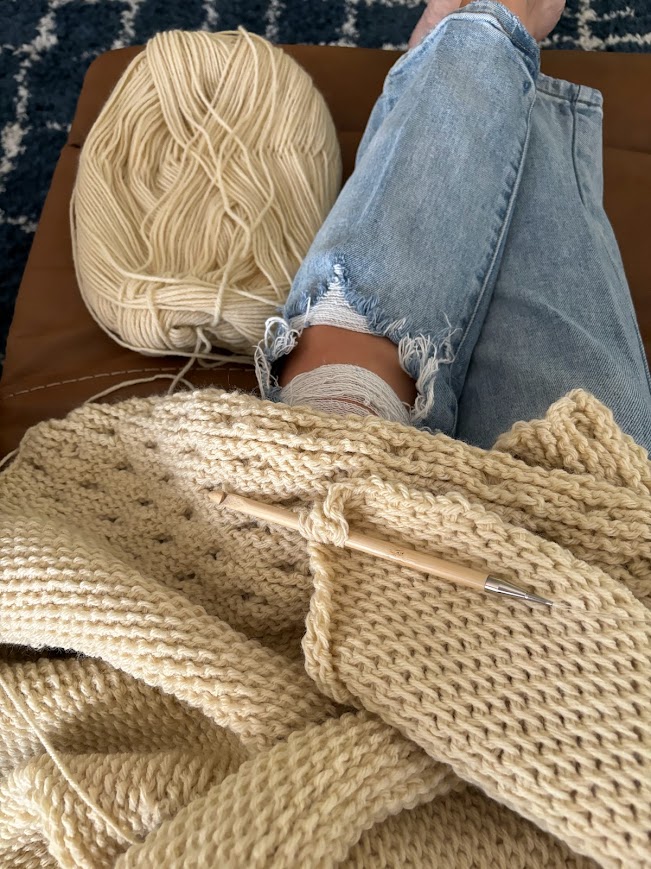
Features of Bamboo Crochet Hooks:
Material: Bamboo crochet hooks are crafted from bamboo, a sustainable and eco-friendly resource. Bamboo is known for its strength and durability, making these hooks both sturdy and environmentally conscious.
Lightweight Design: One of the key features of bamboo hooks is their lightweight nature. This makes them comfortable to use for long periods, reducing hand fatigue.
Smooth Texture: Bamboo hooks are polished to a smooth finish, allowing yarn to glide easily over the hook. This smoothness helps prevent snagging and splitting of yarn.
Warm and Natural Feel: Bamboo hooks have a warm, organic feel unlike metal hooks. They are comfortable to hold, especially in colder weather, as they don't conduct cold.
Subtle Flexibility: Bamboo hooks offer a slight flexibility that is not found in metal or plastic hooks. This can be more comfortable for your hands and wrists, reducing strain during extended use.
Common Uses of Bamboo Crochet Hooks:
Working with Slippery Yarns: The natural texture of bamboo provides a slight grip that can be beneficial when working with slippery yarns like silk or satin.
Eco-Friendly Crocheting: For those looking to make environmentally conscious choices in their crafting, bamboo hooks are an excellent option due to their sustainable material.
Quiet Crocheting: Bamboo hooks are quieter than metal hooks, making them ideal for crocheting in quiet environments or when you don't want to disturb others.
Comfort for Extended Use: The lightweight and warm nature of bamboo hooks makes them comfortable for prolonged use, ideal for large projects like blankets or garments.
Allergy-Friendly: For crocheters with allergies to metals, bamboo hooks are a great alternative, offering a hypoallergenic option.
Delicate Yarn Projects: Their smooth surface is particularly suited for delicate yarns, reducing the chance of snagging and ensuring a more seamless crocheting experience.
6. Crochet Hooks with Ergonomic Handles

Features of Ergonomic Crochet Hooks:
Material: Ergonomic crochet hooks are typically made with a metal or plastic hook part and a handle made of softer materials like rubber or silicone. This combination offers durability and comfort.
Contoured Handles: These hooks are designed with contoured handles that fit comfortably in your hand. This design minimizes strain and helps maintain a natural grip, preventing cramping and fatigue.
Soft Grip: The handles are often soft to the touch, providing a comfortable, non-slip grip. This feature is particularly beneficial for crocheters who spend long hours on their projects.
Varied Sizes: Ergonomic hooks come in a wide range of sizes to accommodate different yarn weights, making them versatile for various projects.
Colorful and Stylish: These hooks often feature bright colors and stylish designs, adding an element of fun and personal expression to your crochet tools.
Suitable for Special Needs: They are especially beneficial for crocheters with arthritis, tendonitis, or other hand and wrist issues, as they require less pressure to hold and use.
Common Uses of Ergonomic Crochet Hooks:
Prolonged Crocheting Sessions: The comfortable grip and design make these hooks ideal for projects requiring long work hours, like blankets or intricate lace patterns.
Arthritis and Hand Pain: Crocheters with arthritis or hand pain find ergonomic hooks easier and more comfortable to use, reducing strain and discomfort.
Precision Projects: Ergonomic hooks' steady grip and control make them suitable for detailed and precise crochet projects, such as amigurumi or fine lace.
Teaching and Workshops: Ergonomic hooks are often used in teaching settings or workshops, where comfort is essential to maintain focus and enjoyment during long learning sessions.
Beginners: They are great for beginners who are still developing their hand strength and dexterity, as they offer more control and reduce the likelihood of hand fatigue.
Large Projects: For large projects that require consistent tension and comfort, ergonomic hooks are the preferred choice, ensuring an enjoyable and pain-free crocheting experience.
7. Tunisian or Afghan Crochet Hooks
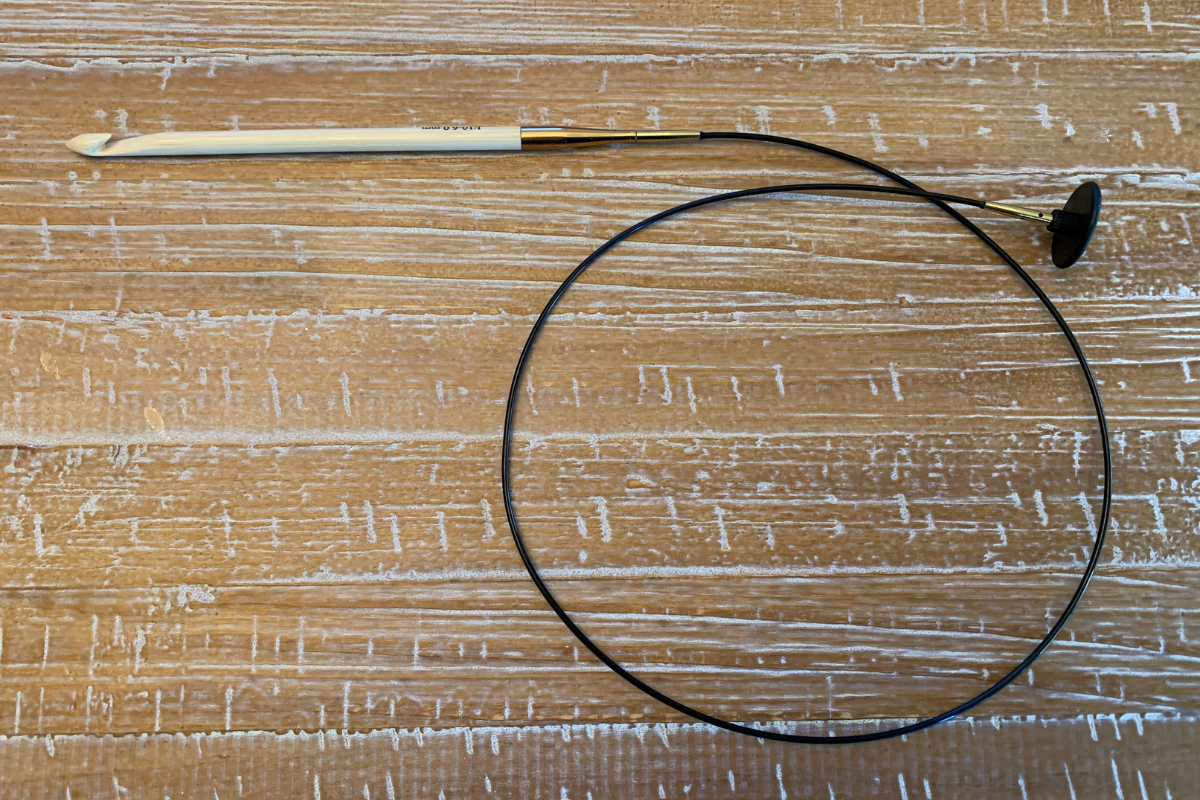
Tunisian crochet hooks, also known as Afghan hooks, are a unique type of crochet hook designed specifically for Tunisian crochet. Tunisian crochet is a technique that combines elements of both crochet and knitting, creating a fabric with a distinctive look. Here are the features and common uses of Tunisian hooks:
Features of Tunisian Crochet Hooks:
Length: Tunisian crochet hooks are longer than traditional crochet hooks, resembling a hybrid between a crochet hook and a knitting needle. They can range from 10 inches to over 14 inches in length.
Single or Double-Ended: Tunisian hooks can be single-ended or double-ended. Single-ended hooks have a stopper or knob at one end to prevent stitches from falling off, while double-ended hooks allow you to work in both directions without turning your work.
Lack of a Thumb Rest: Unlike regular crochet hooks, Tunisian hooks typically lack a prominent thumb rest since the technique involves keeping many stitches on the hook at once.
Common Uses of Tunisian Crochet Hooks:
Tunisian Crochet Fabric: The primary use of Tunisian crochet hooks is for creating Tunisian crochet fabric. This fabric has a distinctive appearance that often resembles a cross between knitting and crochet. It has a grid-like structure, and the elongated hook creates multiple stitches in a single pass.
Blankets and Afghans: Tunisian crochet is well-suited for creating blankets and Afghans. The technique allows for the creation of dense and warm fabrics with a unique texture.
Scarves and Shawls: Tunisian crochet is also popular for making scarves and shawls. The elongated rows and variety of stitch patterns possible with Tunisian crochet can result in beautiful and intricate designs.
Pillows and Home Decor: Tunisian crochet fabric's dense and sturdy nature makes it suitable for creating items like pillows and home decor accessories.
Cables and Texture: Tunisian crochet allows for the creation of textured and cabled patterns. It provides a canvas for experimenting with different stitches and designs not typically achievable with regular crochet.
Double-Ended Hooks for Circular Projects: Double-ended Tunisian hooks are used for circular Tunisian crochet projects, eliminating the need to turn the work at the end of each row. This is especially useful for projects like hats or circular shawls.

Popular Crochet Hooks Brands
1. Clover Amour
Features: Clover Amour hooks are known for their brightly colored, easy-grip rubber handles and smooth aluminum hook tips. The handles are ergonomically designed to provide comfort and reduce hand fatigue.
Popularity: They're a favorite among crocheters for their comfortable grip and the ease with which the hooks glide through yarn. The color-coding for sizes is also a big hit for quick identification.
Check out this Clover crochet hook set which features 10 different sizes.
2. Susan Bates
Features: Susan Bates hooks are often made of lightweight aluminum and feature an inline hook design, which some crocheters prefer for its yarn-grabbing capability. They offer a variety of hooks, including bamboo and plastic.
Popularity: Their affordability and the inline hook design make them popular, especially for beginners. The smooth finish allows for easy crocheting with a variety of yarn types.
This popular Susan Bates set features six different size crochet hooks.
3. Boye Hooks
Features: Boye crochet hooks are recognized for their tapered throat and rounded head design. Made primarily of aluminum, these hooks are durable and have a smooth finish.
Popularity: Crocheters appreciate the smooth yarn flow provided by the rounded head, making these hooks suitable for various yarn types. Their affordability and availability also contribute to their popularity.
This Boye crochet hook set features 8 different sizes.
4. Furls Crochet Hooks
Features: Furls Crochet hooks are luxury hooks known for their beautiful, handcrafted designs and ergonomic shapes. Made from materials like wood and resin, these hooks are designed to alleviate hand strain.
Popularity: Their unique, ergonomic design is a major selling point, especially for those with hand pain or arthritis. While they are on the pricier side, many crocheters find the investment worthwhile for the comfort and style they offer.
The swirling galaxy design on this Furls crochet hook is incredible!
5. Addi Swing
Features: Addi Swing hooks have a distinctive, ergonomic handle with a curved shape, designed for comfort. The hooks themselves are made of smooth, high-quality metal.
Popularity: These hooks are popular for their ergonomic design, which is particularly beneficial for crocheters with arthritis or carpal tunnel syndrome. The high-quality construction and comfortable handle make them a favored choice for long crocheting sessions.
Check out the unique shape of the Addi Swing crochet hook here.
6. Tulip Etimo
Features: Tulip Etimo hooks are known for their soft, cushioned handles and smooth, durable hook tips. They often come in sets with a convenient carrying case.
Popularity: The combination of comfortable grip and smooth hook action makes them a favorite. They are particularly praised for their ability to reduce hand fatigue, making them ideal for extended crocheting projects.
The rose color of this Tulip Etimo set is so pretty!
7. Knitter's Pride
Features: Knitter's Pride offers a variety of hooks, including ergonomic designs with soft grips and smooth aluminum hooks. They also provide unique materials like carbon fiber.
Popularity: Their wide range of styles and materials, including options for those with grip issues, makes them a popular choice. The brand is also known for its quality and innovative designs.
Knitter's Pride also makes one of our favorite Tunisian crochet hook sets here.
8. Prym
Features: Prym hooks are known for their ergonomic design and smooth, high-quality hooks. They offer both plastic and metal options, catering to different preferences.
Popularity: Prym hooks are favored for their comfortable grip and the ease with which they allow the yarn to glide, making them suitable for both beginners and experienced crocheters.
I really love the design and colors of this Prym crochet hook set.
Each of these brands brings something unique to the table, whether it's the ergonomic design for comfort, the quality of material for smooth crocheting, or the affordability for beginners.
This diversity in features and benefits is what makes them popular among the vast community of crocheters. As you become a more experienced crocheter, you'll eventually develop a personal preference for the type of hook you decide to use. The best hook is the one that feels right in your hand.
Let us know when you figure out your favorite crochet hooks and why!
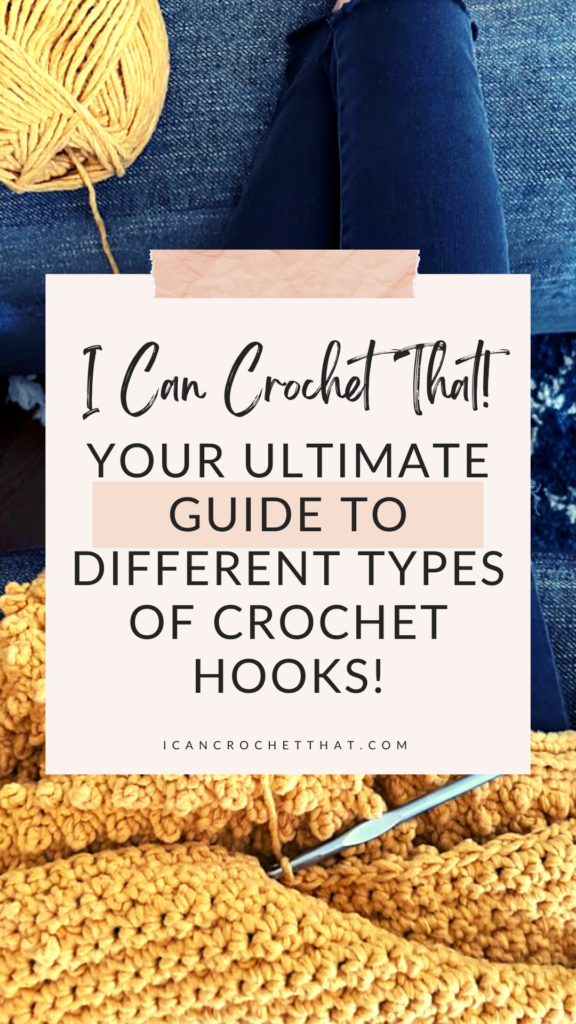
Crochet Hook Size Chart
Here's a table outlining various crochet hook sizes, including both the millimeter (mm) size and the corresponding letter size commonly used in the United States:
| Letter Size | Millimeter Size (mm) |
|---|---|
| B-1 | 2.25 mm |
| C-2 | 2.75 mm |
| D-3 | 3.25 mm |
| E-4 | 3.5 mm |
| F-5 | 3.75 mm |
| G-6 | 4 mm |
| 7 | 4.5 mm |
| H-8 | 5 mm |
| I-9 | 5.5 mm |
| J-10 | 6 mm |
| K-10.5 | 6.5 mm |
| L-11 | 8 mm |
| M/N-13 | 9 mm |
| N/P-15 | 10 mm |
| P/Q | 11.5 mm |
| Q | 15 mm |
| S | 19 mm |
Every crochet pattern will include the recommended crochet hook size. You'll also see this on a yarn label. In order to pick the perfect crochet hook size for your project, it's best to make a swatch and measure the gauge.
When choosing a crochet hook, consider the type of yarn you'll be using, the project requirements, and your personal preferences for comfort and style. It's common for crocheters to have a variety of hooks in their collection for different projects and purposes.


